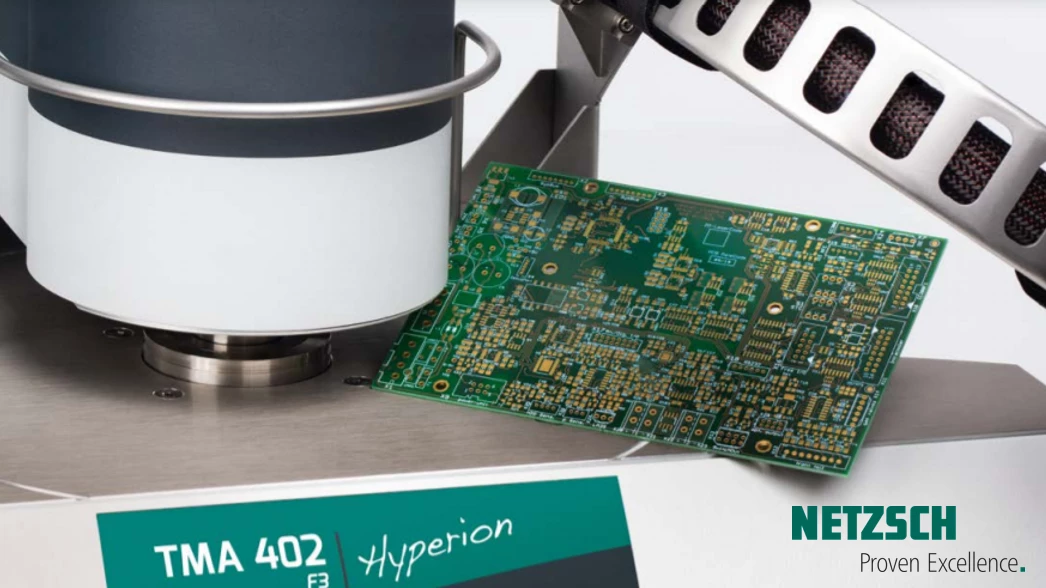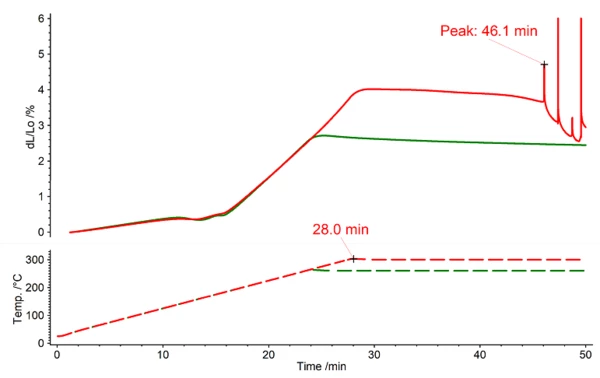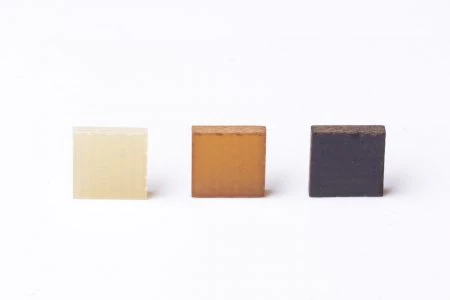
02.10.2020 by Dr. Natalie Rudolph, Gabriele Stock
Quality Control of Electronic Assemblies Using Thermomechanical Analysis
A major source of failure of electronic assemblies is thermal expansion and the problems it causes. To make sure that the circuit base boards conform to a certain quality, IPC standards were put into place that require measurement of the thermal expansion, Glass Transition TemperatureThe glass transition is one of the most important properties of amorphous and semi-crystalline materials, e.g., inorganic glasses, amorphous metals, polymers, pharmaceuticals and food ingredients, etc., and describes the temperature region where the mechanical properties of the materials change from hard and brittle to more soft, deformable or rubbery.glass transition and softening point. Learn how you can comply to the standard with the new TMA 402 F3 Hyperion® Polymer Edition.
A major source of failure of electronic assemblies is thermal expansion and the problems it causes. Thermomechanical Analysis can help in avoiding those product failures.
FR4 – most commonly used composite in the electronic industry
FR4 (FR= flame retardant) and its derivates (FR2, FR3, FR5) are by far the most widely used base materials for electronic circuit boards and electronic assemblies. The FR4’s backing material exists of fiberglass woven into a thin, cloth-like sheet. The glass fabric is then impregnated with a flame-retardant epoxy resin. The resulting low cost composite is stiff, insulates reliably and performs well in most environmental conditions. On the flip side, the epoxy resin matrix has a lower Tg and higher thermal expansion coefficient than the reinforcing glass fabric and tends to soften and expand when a circuit board goes through several thermal cycles in the production process and potentially during use. This can lead to a partial detachment of the pressed material compound, which, in turn, leads to joint failures or delamination. The consequence is usually a failure of the assembly. Thermomechanical analysis (TMA) is a good method to measure thermal expansion of the circuit board base, electronic components, and component materials.
To make sure that the circuit base boards conform to a certain quality, IPC standards were put into place that require measurement of the thermal expansion, Glass Transition TemperatureThe glass transition is one of the most important properties of amorphous and semi-crystalline materials, e.g., inorganic glasses, amorphous metals, polymers, pharmaceuticals and food ingredients, etc., and describes the temperature region where the mechanical properties of the materials change from hard and brittle to more soft, deformable or rubbery.glass transition and softening point [see IPC-TM-650 2.4.24.1 Time to Delamination (TMA Method)].
CTE and Tg – Two important values for the quality control of FR4 composites
The important material characteristic for quality assurance of polymer composites like FR4 is the Glass Transition TemperatureThe glass transition is one of the most important properties of amorphous and semi-crystalline materials, e.g., inorganic glasses, amorphous metals, polymers, pharmaceuticals and food ingredients, etc., and describes the temperature region where the mechanical properties of the materials change from hard and brittle to more soft, deformable or rubbery.glass transition temperature, Tg. This is the temperature point where the epoxy resin structure starts to soften. As soon as the Tg value is reached, the material starts to expand more – typically between 2-3 times more than in the solid state. Thermomechanical analysis (TMA) is a perfect tool for studying the expansion behavior and softening temperature of various materials such as polymers, elastomers and composites. It provides fundamental information about the coefficient of thermal expansion (Coefficient of Linear Thermal Expansion (CLTE/CTE)The coefficient of linear thermal expansion (CLTE) describes the length change of a material as a function of the temperature.CTE), the Glass Transition TemperatureThe glass transition is one of the most important properties of amorphous and semi-crystalline materials, e.g., inorganic glasses, amorphous metals, polymers, pharmaceuticals and food ingredients, etc., and describes the temperature region where the mechanical properties of the materials change from hard and brittle to more soft, deformable or rubbery.glass transition temperature as well as about viscoelastic properties. It is a very sensitive method and can be used to determine weak physical transitions that are associated with changes in modulus, Curing (Crosslinking Reactions)Literally translated, the term “crosslinking“ means “cross networking”. In the chemical context, it is used for reactions in which molecules are linked together by introducing covalent bonds and forming three-dimensional networks.curing, or delamination, which sometimes cannot be detected by Differential Scanning Calorimetry (DSC).
This makes it the method of choice for quality control. Testing the maximum processing temperature of your FR4 reduces the probability of the Printed Circuit Board (PCB) being damaged during component production.
Time to Delamination – visible product failure
The PCB gets subjected to thermal StressStress is defined as a level of force applied on a sample with a well-defined cross section. (Stress = force/area). Samples having a circular or rectangular cross section can be compressed or stretched. Elastic materials like rubber can be stretched up to 5 to 10 times their original length.stress during assembly, for example, in the reflow soldering oven. The time to delamination is important when it comes to the material selection for a certain application. The figure below shows a measurement on an FR4 sample in which the time to delamination was recorded. Two measurements were conducted. In both, the sample was heated to the testing temperature. Then one was kept at an IsothermalTests at controlled and constant temperature are called isothermal.isothermal temperature of 260°C (according to IPC standard) and a second one with an IsothermalTests at controlled and constant temperature are called isothermal.isothermal temperature of 300°C. In the first measurement at 260°C (green line), the TMA did not detect delamination as the curve stays flat until the end of the measurement. However, at the higher temperature of 300°C, degradation of the product is visible. The second measurement, records a Time to Delamination at 18.1 min after being held at an IsothermalTests at controlled and constant temperature are called isothermal.isothermal temperature of 300°C, which was reached 28 min after the start of the measurement. The TMA clearly detects the delamination, where the physical inspection of the sample only shows some discoloration as can be seen in photos taken of the different samples before and after the tests.


This test has become especially important ever since the “Restriction of Hazardous Substances Directive” 2002/95/EC (RoHS 1) took effect in the European Union. In the case of electronic and electrical equipment, this affects, for example, the use of lead-containing solders. Equipment produced or sold to the EU market now has to be lead-free. This had a major effect on the required Thermal StabilityA material is thermally stable if it does not decompose under the influence of temperature. One way to determine the thermal stability of a substance is to use a TGA (thermogravimetric analyzer). thermal stability of all components – including FR4.
The processes to produce lead-free solders now require reflow temperatures of up to 260°C. Prior reflow temperatures were only at 240°C. The FR4 used for this study would be suitable for both the leaded and the lead-free solders, as the delamination effects were not detected until a temperature of 300°C was reached. However, not all materials that are currently used as base materials for electronic circuit boards and electronic assemblies may withstand the new requirements of lead-free processes.
The above investigation with TMA shows how important the determination of Time to Delamination is to avoid product failure and supply your customers with high-quality products. Thermomechanical Analysis is applied according to IPC standard to test for material suitability. The new TMA 402 F3 Hyperion® Polymer Edition is specifically designed to measure a wide range of polymer materials and is well suited for the quality control needs of the electronic component industry.


